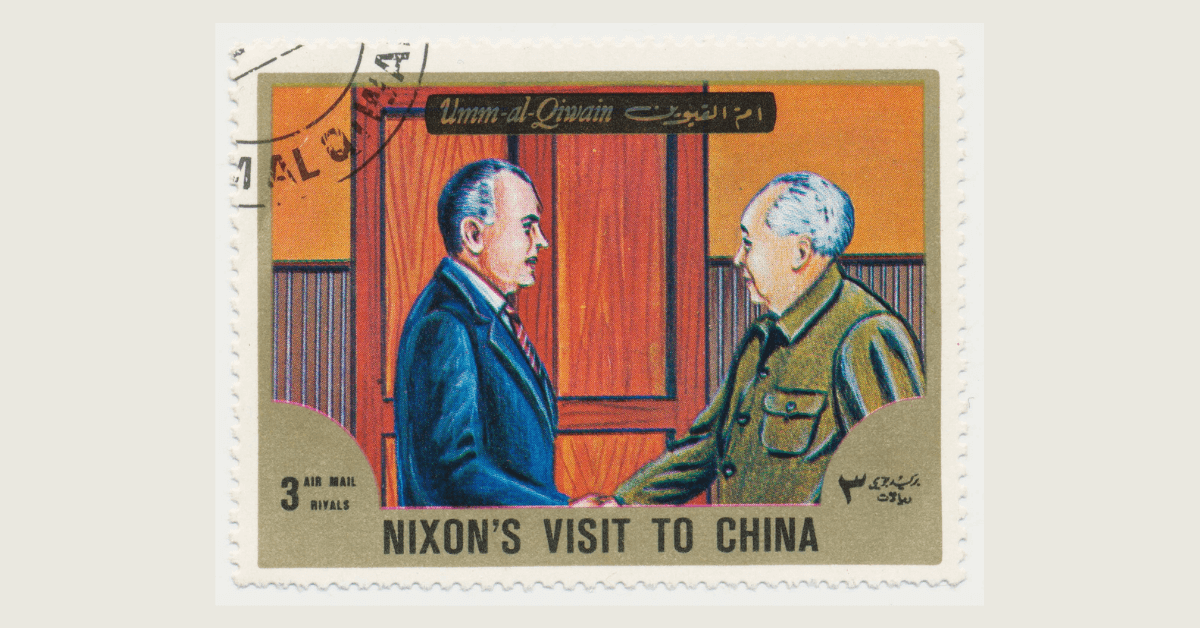October 22, 2020

Nixon Goes to China: Why Healthcare Leaders Must Learn from History
Long before Détente, one of the boldest foreign policy moves by any president was the establishment of diplomatic relationships with the Peoples Republic of China (PRC). President Richard Nixon was dealing with a public weary of the Vietnam conflict, the continued cold war threat of the former Soviet Union, and the lack of direct diplomatic channels with the PRC itself. A visit to Beijing would lead to greater political leverage with the Soviet Union, open trade routes and eventually help begin the transition out of Vietnam.
Fifty years later, the action remains heralded as an excellent example of a bold move to redirect history. We need a bold healthcare move today. We must establish diplomatic relationships with our patients! Redirect healthcare’s future.
Healthcare organizations today take the patient relationship for granted. For decades, patients were an afterthought. Spending and support focused on the perceived gatekeepers for patients, the medical staff.
My first salaried role in healthcare was as a physician relations coordinator for a mid-sized health system. My responsibility was keeping the entire medical staff happy. Specifically, a content medical staff meant loyalty. Loyalty meant more admissions and referrals.
Over the years, many hospitals employed physician relations professionals who deployed tactics to ensure continuous medical staff loyalty. Hospitals developed analytic capabilities to maximize physician relations as healthcare executives obsessed over statistics looking at leakage and volumes. This continues today.
Where Are the Patients? What Would Nixon Do?
Recently, progressive health organizations created offices around patient experience. They often have minimal resources, but it’s a step in the right direction. Their focus is largely ensuring a satisfactory inpatient experience.
Changes in reimbursement tied to Hospital Consumer Assessment of Healthcare Providers and Systems (HCAPS) drove most of the motivation behind patient experience efforts. The higher HCAPS scores, the higher payment. Payers also adopted patient satisfaction as a tool to reward hospitals for happy customers.
As with China, Nixon would engage patients at a deeper level. Recognizing patients, not medical staff, needs to be the focus of health system vision and missions. Otherwise nothing changes.

The digital age further exasperates the fragmented relationship between hospital and patients in several ways. First, patients want to be known as people before they are patients. They loathe being treated like strangers. Doing the same repetitive paperwork with the same repetitive questions. Second, patients want to be engaged in their care. They want to own their data, see all their results and help determine therapies. Third, they expect a positive experience, not an impersonal transaction.
Patients don’t understand why their vets treat their pets better than hospitals treat them. Nixon would make patient interactions easier and frictionless.
I tweeted recently asking if my airline, hospital and financial services firm knew me. American Airlines called me out by name. They know me. USAA called me out by name. They know me. Crickets from my health system. Despite my history, they don’t know me. Hospitals don’t know their patients. That is a big problem.
More new entrants in healthcare are taking a Nixon approach and engaging patients. Six categories in particular are laser focused on consumers.
- Retail. Wal-Mart and CVS are leading the disruption of the old pipeline of patient’s loyalty to medical staffs, and in turn, to hospitals.
- Telemedicine Companies. Many offer direct to consumer models. They encourage patients to bypass the hassle of office visits.
- Digital-First Practices. Several digital-first companies have opened up practices around the country and are siphoning patients from local physicians.
- Payers. Payers now employ the largest numbers of physicians, diverting control from local physicians, loyal to community hospitals.
- Amazon. Patients are consumers, and Amazon has moved into DME and pharmacy, and uses its model to deliver an amazing patient experience.
- Enlightened Hospitals. A handful of hospitals will soon offer their services globally via their digital platforms. Patients will have a choice between a poor experience with their local hospital or a fantastic virtual experience with best-in-class providers.
I am not sure how much more evidence hospital leaders require. As a former executive at some of the top health systems in the world, I am scared for them. I do not understand the reluctance for action. I suspect a major reason is a reluctance to reengineer the entire health system. But the longer the delay, the higher likelihood of bankruptcy.
Whatever the reason, hospitals are behind. I am not sure time is left to make that bold move, like Nixon visiting China. Time is almost out.
The winner in healthcare will be those who own the patient relationship. There is hope.
Much of this comes down to the great multiplier. The equalizer. Digital transformation and related tools. If a hospital hopes to survive, maybe thrive, they must aggressively pursue modern tools. Survival of the digitalist.
What Are Some of These Tools?
Digital Front Door (DFD) is the singular face of an organization to the consumer, before they are patients. But a patient portal is not a DFD. It’s common for hospitals to have dozens of portals and technical interfaces with patients, including televisits, patient data, engagement, remote monitoring, etc. That all must move into a singular DFD.
Customer Relationship Management (CRM), a requirement for any robust engagement strategy in most mature industries. CRM is a singular system where everything about the patient and family is known, both personal and medical information. An EHR is not a CRM platform.
Remote Patient Monitoring (RPM) to deliver care that can be safely delivered at home, at home. Patients do not want to be in hospitals. Stop encouraging old treatment processes and embrace new methods that reduce costs, improve quality and patient satisfaction. RPM can generate revenue even with the reengineering of hospital operations it requires.
Telemedicine, which in its broadest terms includes televisits, RPM, PT and many other capabilities that enable care delivery at a distance. This is what the digital disrupters are doing as they enter hospitals’ formerly safe catchment areas.
Retail and well-established national brands are siphoning patients from hospitals right now. Medical staff loyalty is a relic of the past.
Nixon’s visit to China was not popular at the time. Many political leaders inside and outside the United States questioned the wisdom of such a move. It wasn’t clear until a few years later that this bold move kept us clear of a third world war, cemented our superpower status and opened up unparalleled economic prosperity.
Nixon ignored his critics and ushered in a welcomed new era of diplomacy that we benefit from fifty years later. We need our hospital leaders to make a bold move now and address patient engagement at a fundamental level. Then fifty years later we will praise these individuals as transformational leaders.





